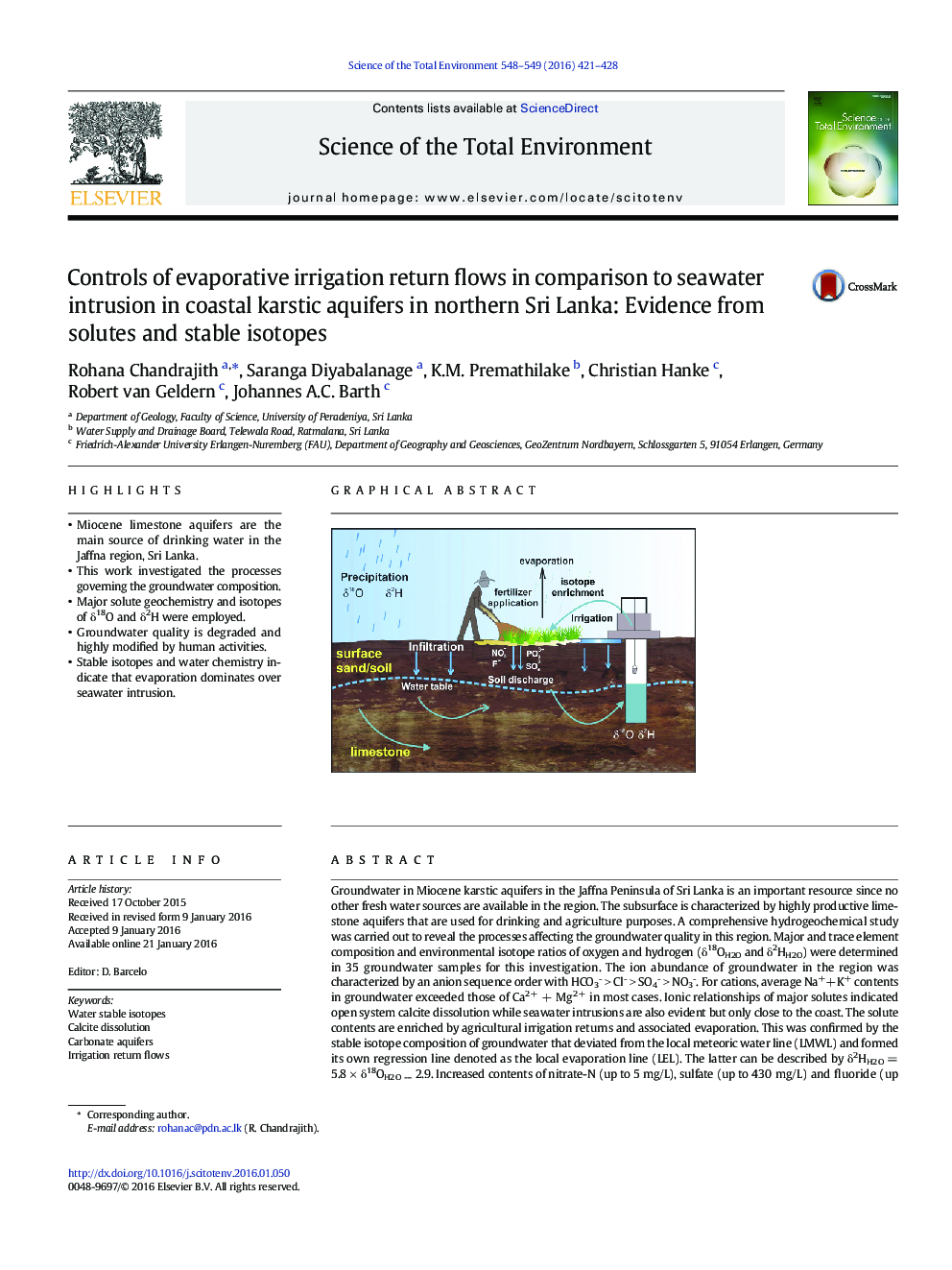| Article ID | Journal | Published Year | Pages | File Type |
|---|---|---|---|---|
| 6323372 | Science of The Total Environment | 2016 | 8 Pages |
â¢Miocene limestone aquifers are the main source of drinking water in the Jaffna region, Sri Lanka.â¢This work investigated the processes governing the groundwater composition.â¢Major solute geochemistry and isotopes of δ18O and δ2H were employed.â¢Groundwater quality is degraded and highly modified by human activities.â¢Stable isotopes and water chemistry indicate that evaporation dominates over seawater intrusion.
Groundwater in Miocene karstic aquifers in the Jaffna Peninsula of Sri Lanka is an important resource since no other fresh water sources are available in the region. The subsurface is characterized by highly productive limestone aquifers that are used for drinking and agriculture purposes. A comprehensive hydrogeochemical study was carried out to reveal the processes affecting the groundwater quality in this region. Major and trace element composition and environmental isotope ratios of oxygen and hydrogen (δ18OH2O and δ2HH2O) were determined in 35 groundwater samples for this investigation. The ion abundance of groundwater in the region was characterized by an anion sequence order with HCO3Ë > ClË > SO4Ë > NO3Ë. For cations, average Na++K+ contents in groundwater exceeded those of Ca2 + + Mg2 + in most cases. Ionic relationships of major solutes indicated open system calcite dissolution while seawater intrusions are also evident but only close to the coast. The solute contents are enriched by agricultural irrigation returns and associated evaporation. This was confirmed by the stable isotope composition of groundwater that deviated from the local meteoric water line (LMWL) and formed its own regression line denoted as the local evaporation line (LEL). The latter can be described by δ2HH2O = 5.8 Ã δ18OH2O -- 2.9. Increased contents of nitrate-N (up to 5 mg/L), sulfate (up to 430 mg/L) and fluoride (up to 1.5 mg/L) provided evidences for anthropogenic inputs of solutes, most likely from agriculture activities. Among trace elements Ba, Sr, As and Se levels in the Jaffna groundwater were higher compared to that of the dry zone metamorphic aquifers in Sri Lanka. Solute geochemistry and stable isotope evidences from the region indicates that groundwater in the area is mainly derived from local modern precipitation but modified heavily by progressive evaporative concentration rather than seawater intrusion.
Graphical abstractDownload high-res image (314KB)Download full-size image
